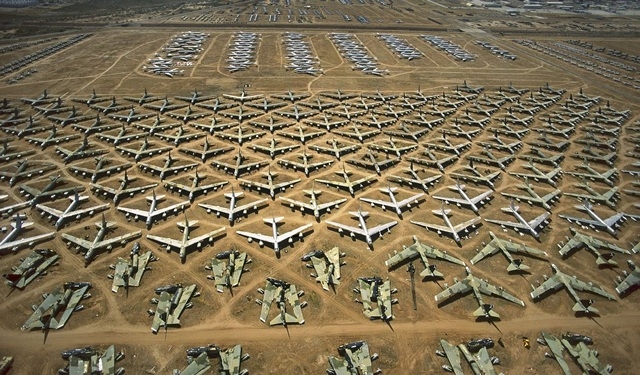How do aircrafts die? This question was triggered to me during a class on engines maintenance and certification back in Spain. The teacher was talking about life cycle assessment and he mentioned something about obsolescence costs. I had recently watched a documentary on planned obsolescence, which discussed that engineers design products (e.g. lightbulbs, printers, clothes, batteries) with a forced ‘expiration date’, accelerating the need of new goods and boosts economic growth. This means I had heard of planned obsolescence, but more as a ‘conspiracy’ of consumerist society rather than as something that concerned me as an engineer. Until then I had not even asked myself how aircrafts’ end of life is handled. Can they be recycled as we recycle plastic packages or paper at home? How many years or flight hours is a plane operative on average? Some minutes later he added: obsolescence is usually overlooked during the design process. Indeed! I was about to graduate and I had never been curious about it.
How is aircrafts’ end of life handled? There are several cemeteries or aircraft ‘boneyards’ around the world. As an example, this image of the cemetery in Tucson deserts. By looking at it, these thousands of aircrafts appear as useless scrap and the deserts as an effortless solution for airlines and air forces to get rid of old planes. So is it not possible to give a second life to old aircrafts? It is. What is more: in the last ten years initiatives to cope with obsolescence have turned into profitable business for some companies such as AELS in The Netherlands.
These companies buy the airplanes to the airlines -relieved from the burden of obsolescence- and disassemble them. First, engines -the most expensive part- are tested and if they have flight hours left they are certified and used again. These gas turbines can also be used for industrial power generation. Next, other components including the landing gear are removed, inspected, repaired and certified to be reused as spare parts. Finally, cheaper materials such as the aluminum in the fuselage are classified and recycled. Creative designers can also use no-value objects such as the seats, doors or a even a whole cockpit. As a footnote: some of the aircrafts in Tucson have been painted and the story of Bruce Campbell shows an exceptional way for an aircraft to die! Coming back to technical details of dismantling, special care is needed to handle fuels, lubricants and hydraulic liquids as well as composite materials and plastics. According to [1], around 85% of an A300 weight can have a different second life than being scrap in a desert. This all suggests to me that there is potential life left in the products that we think are dead, being these an aircraft or anything that we throw away to the trash bin.
How do we include obsolescence in the design? As engineers we can redesign materials, production processes, embrace modularity to easily use repaired pieces during maintenance…enhancing durability and recyclability. However, two other ideas come to my mind. The first one is that as in every multi-objective optimization there are conflicting design criteria: reinforcing obsolescence means sacrificing other design values. For example: using lightweight composite materials reduces fuel consumption and thus greenhouse gas emissions but carbon fibers are more difficult to recycle than heavier metallic alloys. The second idea is that products obsolescence also appears due to other designers’ innovation. Innovation dynamics and the need of economic growth and technological progress define when a product is obsolete. One designer can model and design for durability of his or her own product… but can a designer forecast when it becomes ‘obsolete’ and plan for it?
References:
[1] El País. Cuando el residuo es un Airbus de 100 toneladas. [Online] June 30, 2010. http://blogs.elpais.com/eco-lab/2010/06/cuando-el-residuo-es-un-airbus-de-100-toneladas.html.
